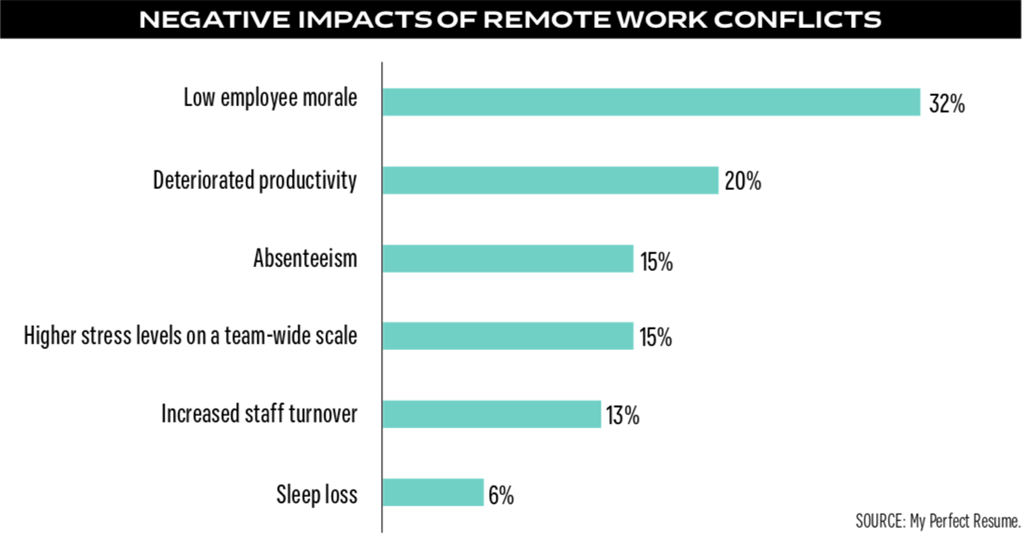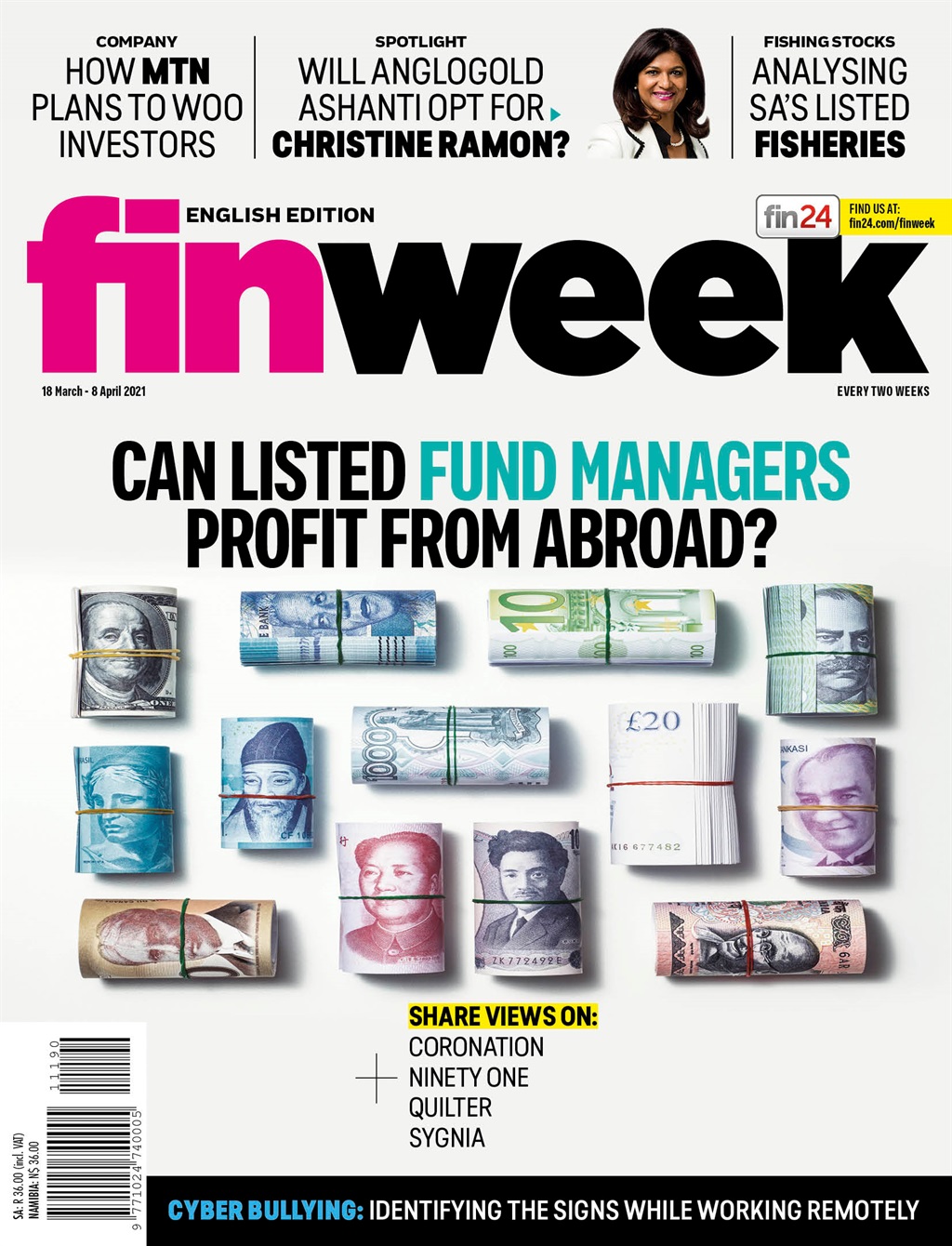
Bullying in the workplace is not limited to the office. How does one detect and deal with it in the virtual workspace?
Remote working conditions brought our offices
into our homes, and with it came all the other
realities, such as conflict with the boss and
co-workers and ... cyberbullies.
However, the spats and bullying are more private and difficult to detect. According to a recent US study involving 1 000 remote workers, 42% experienced conflict with their boss with 36% saying their boss was too aggressive in their texts. Almost 70% of those said their boss cursed at them in the messages.
More than 80% of professionals in the US study experienced remote workplace conflicts, according to the study published by My Perfect Resume.
Although bullying is reported in South Africa, there are no statistics available, says Christine Steyn, founder and director of Dynamic Consciousness Coaching.
Bullying in the workplace manifests through unwanted, persistent conduct, which is serious, and demeans, humiliates, or creates a hostile or intimidating work environment.
Steyn says there is a rise in cyberbullying and virtual harassment because virtual workspaces are just as accommodating to bullying as physical spaces.
Conflict sources
The main sources of the conflict are stress about work (25%), lack of teamwork (25%) and rude behaviour (22%), according to the US study.
Marle´ne Nunes, owner of Self and More Integrative Coaching, says it becomes easier to “misunderstand” a tone or remark when people are working remote from each other. “Outside irritations can also fuel conflict. People may feel a heightened sense of anxiety and the irritation or anxiety can easily spill into the conversation or meeting.”
People may take it personally and react, not realising that the irritation is not aimed at them. When we are at the office it is easier to “sense” someone’s mood.
Working remotely makes it more difficult to understand when someone snaps during an early morning phone call. When people take it personally it can escalate into conflict that could have been avoided.
Nunes, who specialises in trauma and anger management, says after the events of the last year, it is safe to say that none of us has escaped trauma.
She refers to the “drama triangle”, when we find
ourselves in different spaces or playing different roles,
depending on our frame of reference and our emotional
maturity. The drama triangle (first described by Stephen
Karpman in 1961) is used in psychology to describe the deceiving way in which we present ourselves as
“victims”, “persecutors” and “rescuers”.
Although all three are roles and none may be true to who we really are, we can all get caught in a cycle that is hard to escape, writes Remy Blumenfeld, coach for creative leaders and entrepreneurs, in Forbes magazine.
Nunes says some adults spend their life stuck in the drama triangle instead of moving from a victim mindset to that of a survivor and thriver, becoming someone who has learned from the past and soared to great heights. This is also applicable to the role of persecutor (bully) who can become the challenger, and the rescuer who can take on the role of coach.
The signs
According to Steyn, tell-tale signs of conflict or even bullying are when a team member who is generally talkative becomes quiet and timid, and the placid team member suddenly explodes during meetings.
Bullies can easily exclude a co-worker by ignoring the “raised hand” during a virtual meeting, talking “over”a specific team member, constantly shooting downa team member’s ideas, and by asking everyone how they are except one specific team member.
Steyn refers to neurological studies on the brain that show that social hurt (social exclusion) is felt the same as physical hurt. The same part of the brain reacts.
During an experiment, a child was placed in front of a computer with an interactive programme in which two virtual children were playing with a ball, throwing it to each other. One of the virtual children asked the “real” child, who was watching, if he wanted to join the game, and threw the ball to him, which he then threw back.
After a while, the two virtual children excluded the other child and played as if he was not there. “The social exclusion was so real that the child felt as if he was physically slapped,” says Steyn.
The same thing can happen in the workplace – the moment someone is deliberately excluded; he will experience the emotional hurt as physical hurt. “That is damaging. The same hurt is experienced when two people talk about another person as if that individual is not present,” explains Steyn.
Many people don't realise that they are engaging in bully behaviour. Many are shocked when they are alerted to their bullying conduct.
“Few people intend to hurt someone; it often really happens subconsciously,” says Steyn.
Cyberbully conduct includes: Inconsideration of other people – particularly online; sending inappropriate private messages during a meeting – the fact that nobody else sees the message, does not make it right; constantly shooting down someone’s ideas; expecting immediate reaction to messages (some feel they will be bullied less if they respond immediately, while others' immediate response gives them a sense of control although they are actually being controlled).
The language
Nunes adds that conflict language can be a recognised by how we react and not by what we say on virtual platforms. People's physical reaction plays a role too. She explains that our facial expressions are very obvious in our new meeting rooms. Visible tension can vary from slight whiteness around the jaw and a flushed face, to pursed lips and heavy breathing or tapping on a desktop,” she says.
“We need to understand the humanness of people and the trauma all of us are experiencing. If you feel you are being treated badly, seek help to empower yourself mentally and emotionally to become more flexible in your choice of behaviour,” advises Nunes.
New rules of engagement
The organisation needs to have a policy that sets out what constitutes appropriate virtual conduct and cyberbullying. There needs to be proper reporting channels and the process must be trusted by everyone, particularly in organisations where the boss is the bully.
Both Nunes and Steyn also refer to “perceived” bullying.
In many instances the conflict is “accidental”, when an individual's conduct in the workspace triggers an emotion in another person, due to a deep-rooted memory of a previous incident of bully behaviour, or a situation, similar to an experience when conflict did not contribute to a feeling of being in a safe space.
These experiences and perception thereof
is unfortunately what we project onto each other in
subsequent interaction, Nunes explains.
Steyn says people need coping mechanisms to ensure they can differentiate between real and perceived bullying. It is important to take a step back when you are triggered. It takes between 30 and 90 seconds for an adrenalin rush to reach its peak and flow through the body. She says that it is important to see things in perspective and ask: “Do I fight this, or does it really warrant any reaction?”
According to the US study, the outcome of conflict between a boss and an employee varied.
Only 8% made use of third-party mediation.
One of the most critical qualities for today’s leaders is the ability to communicate and observe people. Longer work hours, job insecurity and adjusting to a virtual workplace have impacted people’s emotional competency.
“People need more time and opportunities to calm down emotionally,” says Steyn.




 Publications
Publications
 Partners
Partners














